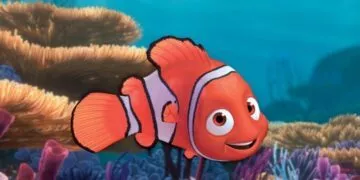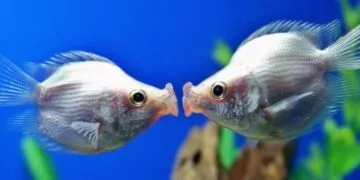The blue tang fish (Paracanthurus hepatus) is a rather cute little fish.
It can usually be found in the tropical reefs of the Indo-Pacific, a vast stretch of water that includes the tropical parts of the Indian and Pacific Oceans.
The blue tang fish can grow to quite a decent size, with adults typically measuring up to 12 inches (30cm) long and weighing up to 21 oz (600g).
Most people wouldn’t recognize a blue tang by its name alone, but they would almost certainly know one if they saw it.
If you haven’t figured it out yet, Dory from Finding Nemo is a blue tang!
While popularized by Finding Nemo, the blue tang has been a common resident of aquariums worldwide for some time.
Let’s take a closer look at the blue tang and find out what all the fuss is about!
The blue tang fish is a fish of many names.
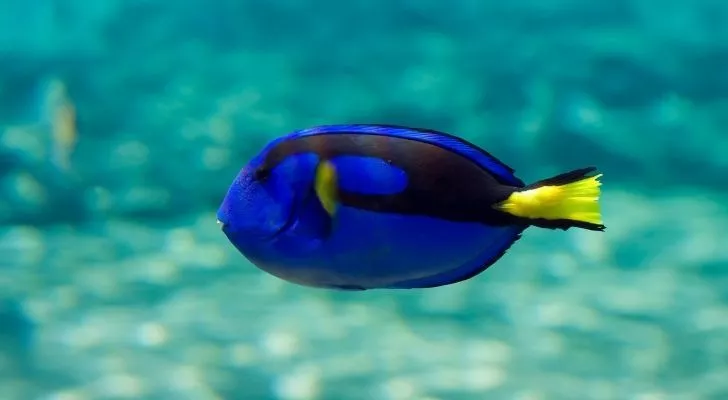
While the blue tang is the most common name for the Paracanthurus hepatus, it’s certainly not the only one.
It’s actually part of a family of fish referred to as surgeonfish, which explains why this particular species is sometimes referred to as the palette surgeonfish, the blue surgeonfish, the doctorfish, and the flagtail surgeonfish.
Other names for the blue tang include the regal blue tang, the Pacific blue tang, and even the letter 6 fish!
There’s actually another fish out there called the blue tang.
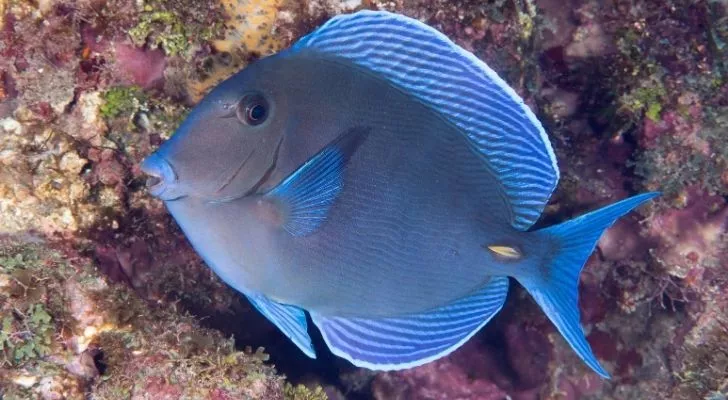
And we have to admit; it does look a little bit similar!
This other blue tang is scientifically called the Acanthurus coeruleus and can only be found on the other side of the world as the Paracanthurus hepatus.
This other blue tang has a range of different names, including the blue doctor and the Atlantic blue tang, the latter being a much less confusing name.
Like the blue tang found in the Pacific, the Atlantic version lives in tropical reefs, although this one can commonly be found anywhere along the east coast of the Americas between New York and Brazil.
The blue tang was immortalized by Disney and Pixar.

As we’ve previously mentioned, most people wouldn’t recognize a blue tang by name alone.
Instead, they would recognize the fish from its on-screen counterpart, Dory, the lovable yet slightly hopeless companion to Marlin in the hit 2003 animated film Finding Nemo.
While Dory herself suffered from short-term memory loss, the blue tang itself doesn’t, as far as we know.
Dory was loved so much, and such an integral part of the Finding Nemo story that a sequel was released in 2016 called Finding Dory, in which Dory becomes the central character.
The blue tang is not always blue.
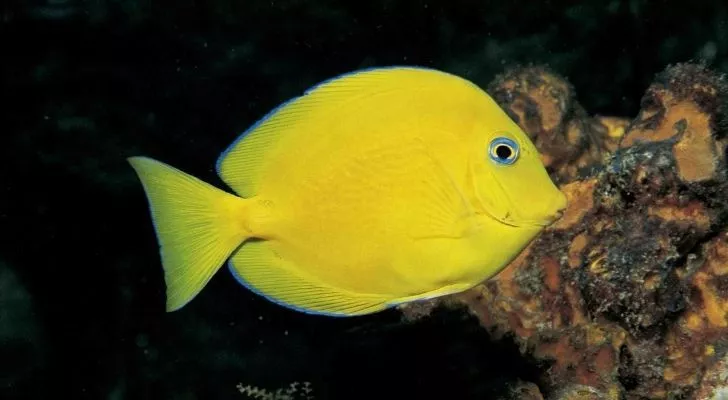
Here’s something that Pixar got quite wrong about the blue tang fish in Finding Dory – it’s not actually always such a vibrant blue color!
In the film, we see Dory at a young age where she simply looks like a tiny cute version of her adult self.
While juvenile blue tangs sure are cute, they’re actually bright yellow, with blue-tipped fins! Adult blue tangs can also change their colors to some degree, depending on how they’re feeling.
For example, when an adult blue tang is stressed, its color changes to a darker violet hue.
Reefs couldn’t survive without fish like the blue tang.
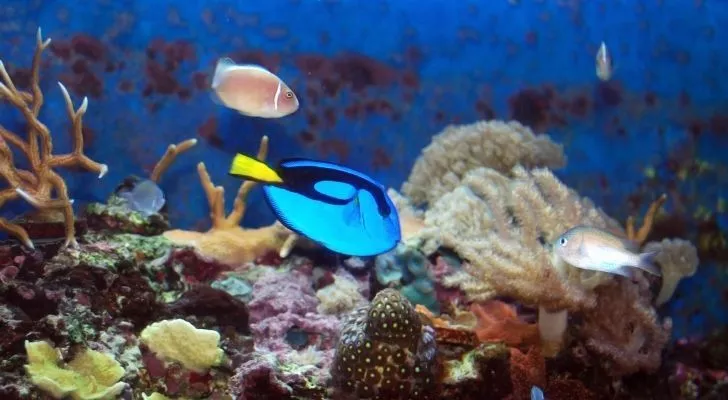
This fish makes up a crucial part of the coral reef life cycle, as they live off a largely vegetarian diet.
While many other reef fish dine on fish lower down the food chain, fish such as the blue tang typically gorge themselves on algae and plankton.
This is important, as the algae they eat off coral would otherwise grow out of control, eventually suffocating the coral itself.
Coral reefs are important as they provide magnificent homes for thousands of fish species that simply cannot live anywhere else.
Blue tangs are very social fish.
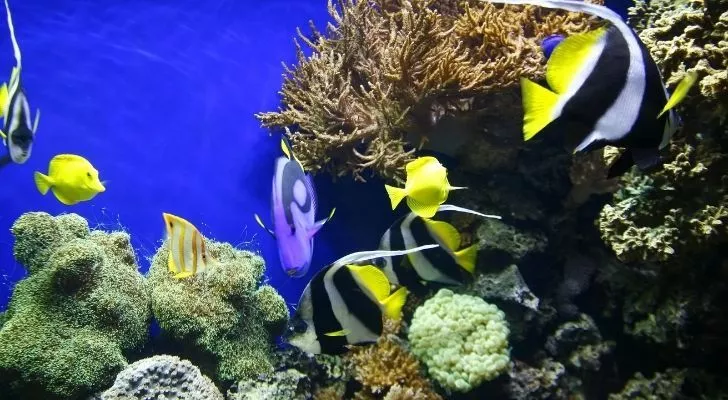
There’s something that Finding Nemo and Finding Dory got quite right, and that’s the fact that the blue tang quite likes to hang around with other fish.
While normally found in small groups, or at least pairs, they are also commonly found in schools of up to 12 fish.
They don’t exclusively hang out with their kind, either.
They usually wouldn’t be found making friends with clownfish, but they are known to associate with other species of tangs and surgeonfish.
You can’t breed blue tangs in captivity.
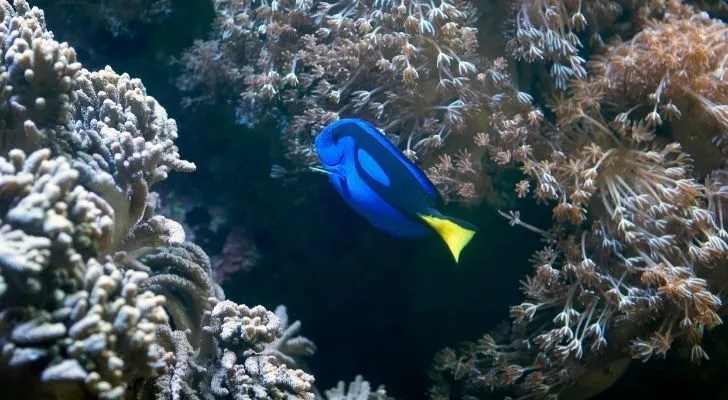
In the years after Finding Nemo was released, there was great concern for the few remaining clownfish found in the wild.
The film ironically dramatically increased the demand for clownfish, so they were commonly caught illegally in the wild to keep up with the demand.
Clownfish can normally be bred in captivity, so the impact ended up not being too great.
Conservationists were again concerned that the release of Finding Dory would lead to an upward trend in blue tang ownership. The concern here is that the blue tang can only breed in the wild, which means that all blue tangs found in aquariums worldwide have been caught in the wild.
Fortunately, the movie did not see any great rise in blue tang capture.
Don’t try and eat a blue tang, no matter how hungry you are.
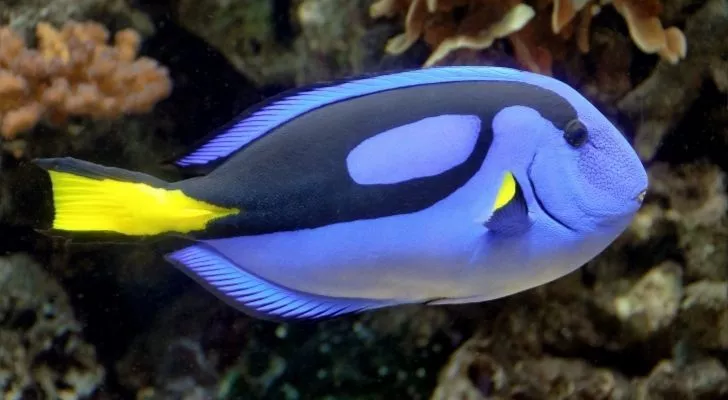
You’d have to be quite hungry to look at a blue tang and think it’s a good fish to eat, anyway. While they are quite long and tall, they’re incredibly slim and, as such, nearly all bone.
To make matters worse (or better, for blue tangs!), they are quite commonly poisonous!
It’s been commonly reported that people who recently ate blue tang flesh suffered from ciguatera poisoning, with symptoms ranging from headaches to dizziness, diarrhea, or even hallucinations!
The fish themselves aren’t naturally poisonous, though. The toxins actually come from a type of microscopic plankton called dinoflagellates.
Blue tangs are actually quite dangerous!
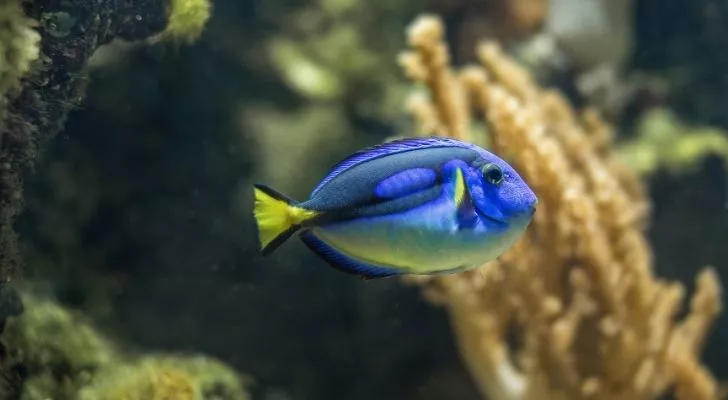
While they may not seriously injure humans, they will definitely make you regret ever messing with them.
Blue tangs are a part of the surgeonfish family named for the razor-sharp scalpel-like barbs that stick out near the fish’s tail.
When in danger, it will thrash its tail from side to side, which can seriously injure any other fish nearby.
If you try and pick one up with your hands, there’s a good chance you’ll come away with a very cut-up hand.
Oh, and their spines are also venomous. While the venom may only make your hand swell up and hurt a lot, it’s enough to incapacitate other fish.
While Finding Nemo and Finding Dory popularized blue tangs, they have long been admired in the wild.
More recently, we’ve started keeping them in marine aquariums, and while this allows us to appreciate their beauty, it’s not necessarily the best idea!
Maybe we should stick to admiring them in their digital form every time we re-watch the movies?


